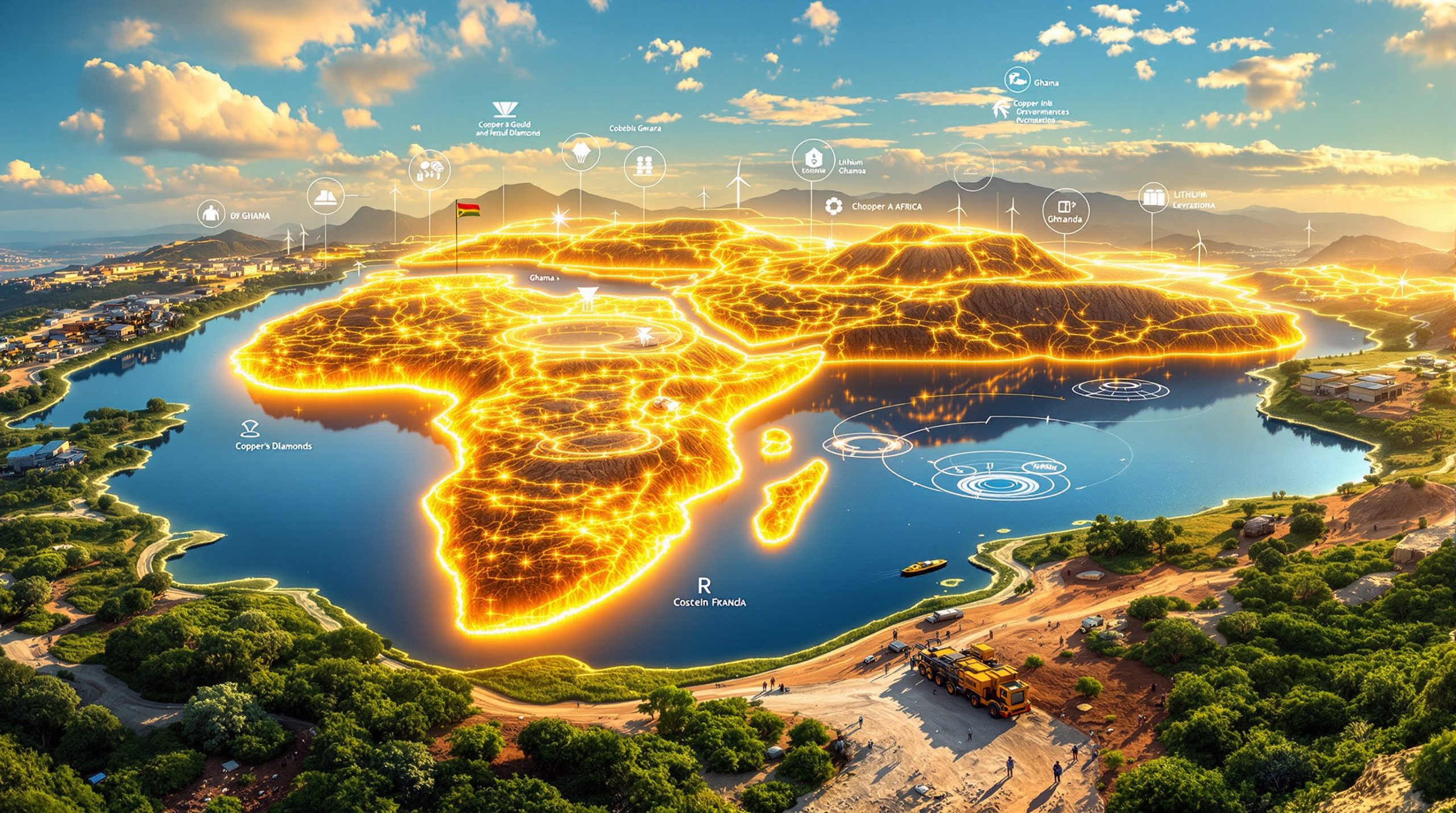Understanding the Global Cobalt Mining Industry
What is Cobalt and Why is it Important?
Cobalt, a silvery-blue transition metal (atomic number 27), has emerged as one of the most critical resources in the modern technological landscape. This relatively rare element serves as an essential component in lithium-ion batteries, where it helps stabilize the cathode structure and prevents degradation during charging cycles. With cobalt comprising up to 20% of the cathode material in many EV batteries, the metal has become indispensable to the electric vehicle revolution.
Beyond batteries, cobalt possesses unique properties that make it vital for aerospace applications, particularly in superalloys used in jet engines where resistance to extreme temperatures and mechanical stress is crucial. The metal also plays important roles in catalysts, magnets, and various industrial processes including petroleum refining.
Global demand for cobalt has surged dramatically, with projections showing consumption could double by 2030, primarily driven by the exponential growth of electric vehicles. As automakers worldwide commit to electrification strategies, securing stable cobalt supply chains has become a strategic priority for companies ranging from Tesla to Volkswagen.
Global Cobalt Production Overview
The global cobalt mining landscape features over 91 operations worldwide, according to data from GlobalData. However, production remains highly concentrated, with a striking geographical imbalance that creates significant supply chain vulnerabilities. The Democratic Republic of Congo (DRC) maintains overwhelming dominance in the sector, hosting 8 of the world's ten largest cobalt mines.
This concentration is even more pronounced when examining production volumes: the DRC accounts for approximately 70% of global cobalt output, with most coming from the copper-rich "Copperbelt" region spanning southeastern DRC and northern Zambia. This geological formation contains extraordinarily high cobalt grades compared to deposits elsewhere in the world, often 5-10 times higher than those found in Australia, Canada, or Russia.
Indonesia has emerged as a significant new player in recent years, with its PT Halmahera Persada Lygend Project now ranking among the top 10 global producers. This represents a strategic shift in the global supply landscape, as Indonesian operations primarily extract cobalt from nickel laterite deposits—a different geological context than the DRC's copper-cobalt sedimentary deposits.
The World's Ten Largest Cobalt Mines by Production
10. Pumpi Cobalt and Copper Project
Location: Katanga, Democratic Republic of Congo
Owner: Wanbao Mining
Production: 4,000 tonnes of cobalt in 2023
Mine Type: Surface (greenfield)
The Pumpi project represents China's growing investment in African mineral resources. The operation features an integrated processing facility that produces both copper cathodes and cobalt hydroxide, with the latter being a preferred intermediate product for battery manufacturers. The mine's relatively modest production belies its strategic importance in China's efforts to secure battery metal supply chains.
9. PT Halmahera Persada Lygend Project
Location: North Maluku, Indonesia
Owner: Ningbo Lygend Mining
Production: 4,750 tonnes of cobalt in 2023
Mine Type: Greenfield operation
Indonesia's emergence as a cobalt producer represents one of the most significant developments in diversifying global supply. Unlike DRC mines, the Halmahera project processes nickel laterite ores using High-Pressure Acid Leaching (HPAL) technology to extract cobalt as a by-product. This operation has benefited from Indonesia's ban on unprocessed nickel exports, which has accelerated investment in downstream processing facilities.
8. Mutanda Mine
Location: Katanga, Democratic Republic of Congo
Owner: Glencore Plc
Production: 5,780 tonnes of cobalt in 2023
Mine Type: Surface (greenfield)
Expected Lifespan: Operating until 2041
Glencore's Mutanda mine temporarily suspended operations in 2019 due to falling cobalt prices and increased export taxes, demonstrating the volatility of the cobalt market. Its resumption in 2022 came in response to strengthening demand from the EV sector. The mine features some of the highest-grade cobalt deposits globally, with concentrations exceeding 0.5% compared to the global average of 0.1-0.2%.
7. Etoile Mine
Location: Katanga, Democratic Republic of Congo
Owner: Shalina Resources
Production: 6,380 tonnes of cobalt in 2023
Mine Type: Surface operation
The Etoile Mine operates in the heart of the DRC's copperbelt and has expanded production significantly in recent years. While less well-known than operations run by major miners like Glencore, Etoile has achieved remarkable efficiency in its hydrometallurgical processing, which produces cobalt hydroxide at purities exceeding 30%. Shalina Resources has invested heavily in community development programs around the mine to address social license concerns.
6. Deziwa Project
Location: Katanga, Democratic Republic of Congo
Owner: China Nonferrous Metal Mining (Group)
Production: 7,240 tonnes of cobalt in 2023
Mine Type: Surface (greenfield)
Expected Lifespan: Operating until 2030
Deziwa exemplifies the growing Chinese influence in Congo's mining sector. The project operates under a unique partnership with Congo's state mining company Gécamines, utilizing a "build-operate-transfer" model where ownership will eventually revert to the Congolese company. The mine employs advanced leaching technology that allows for extraction of cobalt from lower-grade ores, expanding the economically viable resource base.
5. Mashamba East Mine
Location: Katanga, Democratic Republic of Congo
Owner: Glencore Plc
Production: 13,870 tonnes of cobalt in 2023
Mine Type: Surface (brownfield)
Mashamba East represents a brownfield operation, meaning it was developed on previously mined land. The operation benefits from existing infrastructure and Glencore's integrated approach to processing and marketing. The mine features particularly high cobalt grades, often exceeding 0.4%, placing it among the richest cobalt deposits globally. Glencore has implemented comprehensive traceability protocols here to address ESG challenges and opportunities in mining.
4. KOV Mine
Location: Katanga, Democratic Republic of Congo
Owner: Glencore Plc
Production: 17,740 tonnes of cobalt in 2023
Mine Type: Surface (brownfield)
The KOV (Kamoto-Oliveira-Virgule) complex represents one of Glencore's flagship African operations. The mine features an extraordinarily deep open pit that accesses some of the richest copper-cobalt mineralization in the Copperbelt. KOV employs sophisticated ore sorting technology that allows for selective mining of higher-grade materials, maximizing the recovery of valuable cobalt while minimizing waste rock processing.
3. Tenke Fungurume Mine
Location: Katanga, Democratic Republic of Congo
Owner: CMOC Group
Production: 22,500 tonnes of cobalt in 2023
Mine Type: Surface (greenfield)
Expected Lifespan: Operating until 2055
Tenke Fungurume stands out for its extraordinary longevity, with reserves supporting operations well into the 2050s. The mine's exceptionally long life relates to both the size of the deposit and its geological characteristics, which include multiple mineralized zones at varying depths. CMOC's acquisition of the property from Freeport-McMoRan in 2016 represented one of the largest mining transactions in Africa, underscoring China's strategic approach to securing critical mineral resources.
2. Metalkol RTR Project
Location: Katanga, Democratic Republic of Congo
Owner: Eurasian Resources Group
Production: 22,610 tonnes of cobalt in 2023
Mine Type: Surface operation
The Metalkol RTR (Roan Tailings Reclamation) project represents an innovative approach to cobalt production. Rather than conventional mining, this operation reprocesses tailings from historical mining operations, extracting valuable cobalt and copper that were previously unrecoverable due to technological limitations. This approach delivers environmental benefits by remediating legacy mine waste while producing battery metals with a significantly lower carbon footprint than conventional operations.
1. Kisanfu Mine
Location: Katanga, Democratic Republic of Congo
Owner: CMOC Group
Production: 25,500 tonnes of cobalt in 2023
Mine Type: Surface (greenfield)
Expected Lifespan: Operating until 2032
The world's largest cobalt producer, Kisanfu, represents the crown jewel of global cobalt supply. The mine features extraordinary cobalt grades, averaging 0.85%, which far exceed global norms. CMOC acquired the property in 2020 in a $550 million deal with Freeport-McMoRan and has rapidly expanded production. The mine utilizes advanced bio-leaching techniques that employ specialized bacteria to extract cobalt from ore, reducing chemical usage and environmental impact.
What Makes the DRC Dominant in Cobalt Production?
Geological Advantages
The DRC's dominance in cobalt production stems primarily from the exceptional geological endowment of the Central African Copperbelt, which contains approximately 68% of global cobalt reserves. This metallogenic province formed roughly 800 million years ago when metal-rich fluids percolated through sedimentary rocks, creating stratiform copper-cobalt deposits of unprecedented scale and grade.
What makes the DRC's deposits particularly economical is the remarkable cobalt grades, which frequently exceed 0.5% compared to typical grades of 0.05-0.1% elsewhere in the world. This tenfold concentration advantage dramatically reduces mining costs per unit of cobalt produced. Additionally, the shallow nature of many deposits allows for lower-cost open-pit mining rather than underground operations.
The co-production model with copper provides another critical economic advantage. Since cobalt is extracted alongside copper (which typically occurs at 10-20 times higher concentrations), the operational costs are effectively shared between the two metals, making even lower cobalt prices economically viable for producers.
Production Challenges and Considerations
Despite its geological advantages, cobalt production in the DRC faces substantial challenges. Political instability has been a persistent concern, with governance issues, including corruption and regulatory uncertainty, creating operational risks for mining companies. The country has experienced periodic conflicts that have occasionally disrupted mining activities and transportation networks.
Ethical concerns regarding artisanal mining represent perhaps the most publicized challenge. Approximately 15-30% of the DRC's cobalt comes from artisanal and small-scale mining operations, some of which have been documented using child labor and operating under hazardous conditions. These practices have prompted major technology and automotive companies to seek greater supply chain transparency.
Environmental issues also present significant challenges. Many mining operations have faced criticism for water pollution, deforestation, and inadequate waste management. In response, major producers have increasingly adopted more rigorous Environmental, Social, and Governance (ESG) standards, including the Responsible Minerals Assurance Process (RMAP) certification.
The Future of Global Cobalt Supply
Emerging Production Regions
Indonesia's rapid ascent in the cobalt market represents the most significant shift in global supply dynamics. Unlike the DRC's copper-cobalt deposits, Indonesian cobalt comes primarily from nickel laterite ores, where cobalt occurs at concentrations of 0.05-0.1%. Despite these lower grades, Indonesia's advantages include stable governance, established mining infrastructure, and strategic proximity to Asian battery manufacturing hubs.
Australia has emerged as another important alternative producer, with operations like the Murrin Murrin nickel-cobalt mine in Western Australia. Canadian projects, particularly those in Ontario's "Cobalt Camp" mining district, are attracting renewed exploration interest. Cuba's Moa nickel-cobalt operation remains significant, while Russia's Norilsk Nickel continues as Europe's primary cobalt source.
Recycling initiatives are gaining momentum as a complementary supply source. Companies like Redwood Materials and Li-Cycle are developing advanced hydrometallurgical processes that can recover more than 95% of cobalt from spent lithium-ion batteries. As the first generation of electric vehicles reaches end-of-life, this "urban mining" approach could supply up to 25% of cobalt demand by 2035.
How Are Companies Securing Future Supply?
The strategic importance of cobalt has prompted unprecedented vertical integration strategies throughout the supply chain. Tesla exemplifies this approach, securing direct offtake agreements with Glencore while simultaneously investing in battery recycling capabilities and researching cobalt-reduced cathode chemistries. Chinese battery manufacturer CATL has gone further, acquiring equity stakes in multiple mining operations to ensure priority access to materials.
Automotive manufacturers have established increasingly direct relationships with mining companies. BMW, for instance, purchases cobalt directly from mines in Morocco and Australia to ensure ethical sourcing, bypassing traditional commodity traders. Volkswagen has established a dedicated battery metals trading division to secure long-term supply commitments.
Exploration investment has surged, with junior mining companies raising record capital for cobalt projects. Furthermore, strategies for navigating junior mining investments have become increasingly important as the sector grows. However, the 7-10 year timeline from discovery to production means that new mines outside the DRC are unlikely to significantly impact supply before 2030. This timeline gap has intensified competition for existing production, with Chinese companies securing particularly strong positions through strategic acquisitions.
FAQ About Global Cobalt Mining
Which company controls the most cobalt production globally?
CMOC Group has recently surpassed Glencore as the world's largest cobalt mining company, largely due to its ownership of both the Kisanfu Mine (the world's largest producer at 25,500 tonnes annually) and the Tenke Fungurume operation (22,500 tonnes). Glencore maintains a strong second position through its portfolio of three top-10 mines: KOV, Mashamba East, and Mutanda, which collectively produce approximately 37,390 tonnes annually.
How concentrated is global cobalt production?
Global cobalt production exhibits extreme concentration, with the Democratic Republic of Congo accounting for approximately 70% of worldwide output and hosting 8 of the world's ten largest cobalt mines. This concentration exceeds that of almost any other critical mineral – by comparison, the top producing country for copper (Chile) accounts for about 28% of global production, while the top lithium producer (Australia) represents roughly 52% of world supply.
What are the environmental impacts of cobalt mining?
Cobalt mining creates significant environmental challenges, including soil and water contamination from acid mine drainage and heavy metal leaching. Open-pit operations cause habitat destruction and landscape alteration, while processing facilities generate substantial tailings that must be carefully managed to prevent contamination of surrounding ecosystems. Water usage represents another concern, particularly in processing operations that employ acid leaching techniques.
Many companies are implementing more sustainable practices to address these impacts. Innovations include dry-stack tailings (which reduce water usage and failure risks), renewable energy for processing facilities, and progressive mine reclamation that restores ecosystems during the operational phase rather than waiting until closure. Additionally, decarbonisation initiatives in the mining industry are helping address the sector's environmental footprint. Bio-leaching processes that use specialized bacteria rather than harsh chemicals for extraction represent a particularly promising development.
How is the electric vehicle boom affecting cobalt demand?
The electric vehicle revolution has fundamentally transformed cobalt markets. From 2015 to 2023, the percentage of global cobalt demand attributed to batteries increased from approximately 25% to over 65%, creating unprecedented price volatility. Despite efforts to reduce cobalt content in batteries, absolute demand continues to rise due to the exponential growth in EV production volumes.
Battery chemistries are evolving in response to cobalt supply concerns, with manufacturers developing lower-cobalt alternatives such as lithium iron phosphate (LFP) batteries, which use no cobalt. However, these formulations typically offer lower energy density, creating trade-offs between vehicle range and material requirements. Most analysts project continued growth in cobalt demand even as the intensity of use per battery decreases, with annual demand potentially reaching 225,000-300,000 tonnes by 2030 compared to roughly 175,000 tonnes in 2023. This growing demand highlights mining's pivotal role in the clean energy transition, particularly as countries implement US cobalt miner tariffs and their impact on market balance to protect domestic industries.
Looking to Discover the Next Major Cobalt Mining Opportunity?
Stay ahead of the market with real-time alerts on significant ASX mineral discoveries, powered by Discovery Alert's proprietary Discovery IQ model, which transforms complex mining data into actionable investment insights. Explore why major mineral discoveries can lead to substantial returns by visiting Discovery Alert's dedicated discoveries page and position yourself for the next big cobalt opportunity.




